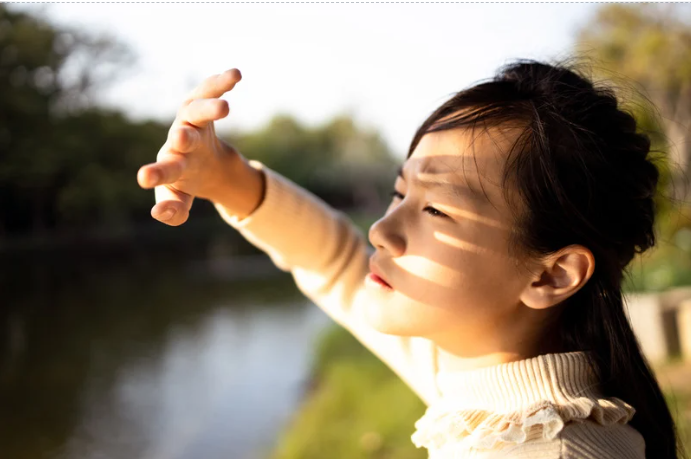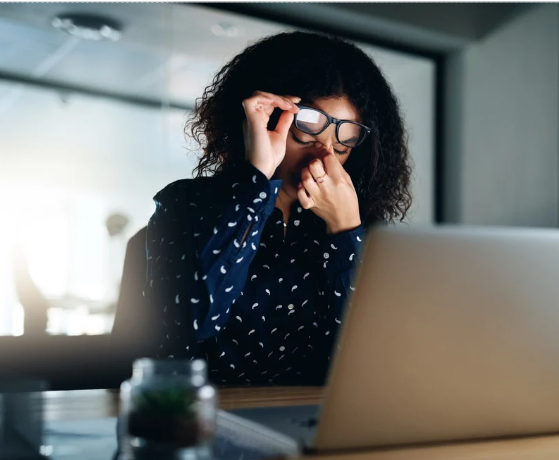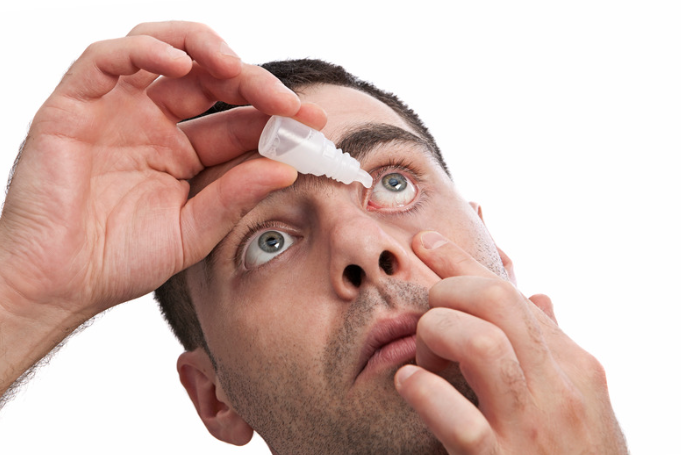Understanding UV Damage and How It Triggers Dry Eyes
When it comes to eye health, most people think of screen breaks or artificial tears. But what often goes under the radar is the power of sunlight—especially ultraviolet (UV) rays—to silently damage our eyes every day. Pairing UV-protective sunglasses with the best eye drops for dry eyes can be your best defense against eye fatigue, long-term damage, and painful dry eyes. Whether you’re heading to the beach or just running errands on a sunny day, both sun protection and hydration from dry eye drops are crucial parts of a comprehensive eye-care routine.
The Hidden Dangers of UV Rays to Eye Health
You’ve likely heard that UV rays can damage your skin, but they’re just as harmful—if not more—to your eyes. Unprotected exposure can lead to:
- Photokeratitis (sunburn of the eye)
- Cataracts
- Macular degeneration
- Pterygium (a growth on the eye’s surface)
- Chronic dry eyes
While eye care drops and dry eye drops provide relief, long-term UV damage can increase your dependence on them. That’s why protecting your eyes from the sun is just as important as finding the best eye drops for dry eyes.
Sunglasses: Not Just a Fashion Statement, But a Necessity
It’s tempting to choose sunglasses based on style alone, but functionality should be your top priority. Make sure your sunglasses offer 100% UVA and UVB protection, which helps preserve your vision and reduce eye strain.
When UV damage is minimized, your eyes stay naturally hydrated longer—meaning fewer episodes of dry eyes and less reliance on eye care drops during the day.
The UV-Dry Eye Connection: How Sunlight Triggers Dry Eyes
Did you know UV exposure can increase tear evaporation? Especially on sunny and windy days, your eyes dry out faster. That gritty, itchy feeling? It’s not just irritation—it’s a warning sign.
Using dry eye drops can relieve symptoms temporarily, but if you’re constantly exposed to harsh sunlight without proper UV protection, even the best eye drops for dry eyes won’t solve the root cause. Protecting your tear film with sunglasses reduces tear evaporation and keeps your eyes comfortable longer.
How to Choose the Right UV-Protective Sunglasses
Not all sunglasses are created equal. Here’s what to look for when selecting a pair that genuinely supports eye health and reduces the need for dry eye drops:
Look for:
- 100% UVA/UVB protection (check for labels)
- Wrap-around designs to prevent peripheral sunlight
- Polarized lenses to reduce glare and strain
- Large lenses for full eye coverage
The right pair not only protects you from UV rays but also complements your routine use of the best eye drops for dry eyes, giving you a complete shield against environmental stressors.
Who Needs UV Protection the Most? Everyone!
While everyone benefits from UV protection, the following groups are especially at risk:
- Children and teens: Their eyes are more sensitive to UV rays.
- Outdoor workers: Prolonged sunlight exposure increases risk of damage.
- Contact lens wearers: Prone to dry eyes, often needing eye care drops.
- Seniors: Age-related eye conditions like cataracts progress faster with UV exposure.
Adding sunglasses with UV protection and using the best eye drops for dry eyes can help reduce symptoms of dryness, redness, and irritation, especially if you’re in any of the above groups.

Complementing UV Protection with Dry Eye Drops
Sunglasses block external triggers, but what about internal dryness? That’s where dry eye drops step in. Using eye care drops after sun exposure rehydrates your eyes, flushes out allergens, and soothes irritation.
For the most effective results, opt for:
- Preservative-free dry eye drops
- Hydrating eye care drops with electrolytes
- Products labeled as the best eye drops for dry eyes, especially if you suffer from chronic discomfort
Together with UV protection, they form the perfect duo for long-lasting eye health.
Traveling or Driving? Don’t Skip the Shades or the Drops
Bright sunlight bouncing off roads or water can worsen dry eyes and fatigue. If you’re a frequent traveler or driver, be sure to:
- Always wear polarized sunglasses
- Carry dry eye drops in your bag
- Use eye care drops after long exposure to glare or air-conditioned spaces
Trust us—nothing ruins a road trip faster than itchy, irritated eyes. Having the best eye drops for dry eyes on hand keeps you focused, alert, and comfortable.
Holistic Eye Health: UV Protection + Daily Habits
UV protection is step one. Pair it with these habits to drastically reduce dry eyes and support your long-term vision:
- Stay hydrated: Drink 2–3 liters of water daily
- Blink regularly: Especially while using digital screens
- Eat omega-3-rich foods: Like salmon, flaxseeds, and walnuts
- Take screen breaks: Follow the 20-20-20 rule
And always keep a bottle of your trusted dry eye drops handy. Hydrated eyes are happy eyes!
When to See a Specialist
If you’re using the best eye drops for dry eyes and wearing UV-protective sunglasses but still struggling with symptoms, it’s time for a professional check-up. Persistent dry eyes could signal:
- Meibomian gland dysfunction
- Tear duct issues
- Autoimmune conditions
A specialist can prescribe targeted eye care drops, lifestyle changes, or treatments that go beyond basic over-the-counter dry eye drops.
What Makes the Best Eye Drops for Dry Eyes Effective?
When dealing with dry eyes, not all drops are equal. The best eye drops for dry eyes go beyond temporary relief—they help restore moisture, improve tear film stability, and protect your eyes from environmental triggers like UV exposure and pollution.
Here’s what to look for:
- Preservative-free formula – Ideal for frequent use and sensitive eyes.
- Hydrating agents like hyaluronic acid or glycerin – Lock in moisture.
- Electrolytes and lipids – Replenish the tear film’s natural balance.
- Long-lasting relief – Reduces the need to reapply often.
Combining UV-protective sunglasses and such high-quality eye care drops can help manage chronic symptoms and make your daily life more comfortable.
Top Recommended Dry Eye Drops on the Market
Here are some well-known options users often turn to when seeking the best eye drops for dry eyes:
- Systane Ultra or Systane Balance – Good for long-lasting relief and lipid layer repair.
- Refresh Optive Mega-3 – Contains flaxseed oil to restore the lipid layer.
- TheraTears Dry Eye Therapy – Electrolyte-balanced and preservative-free.
- Hylo-Forte – Contains hyaluronic acid and is excellent for severe dry eyes.
Pro tip: Keep one at home, one in your bag, and one at work—your eyes will thank you!
Make UV Protection and Eye Hydration a Daily Habit
It’s not just about occasional care—UV protection and dry eye relief need to be daily rituals. Here’s a simple daily routine to maintain healthy, hydrated eyes:
Morning:
- Rinse eyes gently with cool water.
- Apply eye care drops before heading out.
- Wear UV-protective sunglasses.
Midday:
- Take screen breaks and blink consciously.
- Reapply dry eye drops if you feel discomfort or tightness.
Evening:
- Remove lenses (if applicable).
- Use gel-based dry eye drops for overnight hydration.
- Gently massage eyelids to encourage natural tear production.
The Long-Term Benefits of Consistent Eye Protection
While sunglasses and dry eye drops help you feel better in the moment, the long-term benefits are often overlooked. Here’s what you gain by staying consistent:
- Lower risk of cataracts and macular degeneration
- Fewer doctor visits for irritated or infected eyes
- Reduced dependence on drops over time as tear function improves
- Comfortable screen time without eye strain or headaches
- Brighter, clearer vision and more confidence outdoors
Investing in the best eye drops for dry eyes and high-quality UV sunglasses is a small price to pay for lifelong vision comfort and health.
Don’t Let Overcast Skies Fool You: UV Is Still There
One of the most common misconceptions is that UV rays are only dangerous on sunny days. In reality, up to 80% of UV rays penetrate cloud cover. That means you’re still at risk of UV-related eye damage—even when it’s overcast.
Pairing your sunglasses with protective measures like eye care drops becomes even more essential on such days. Your tear film is constantly battling environmental stressors, and staying proactive with dry eye drops makes all the difference.
Final Thoughts: It’s Time to Take Eye Care Seriously
You only get one pair of eyes—and they deserve to be protected. Whether you’re someone who already deals with dry eyes or you’re looking to prevent long-term damage, the combination of UV protection and the best eye drops for dry eyes is a game-changer.
Wear your sunglasses daily
Use your dry eye drops as needed
Avoid prolonged exposure to sun, wind, and screens without breaks
Choose eye care products that nourish, not just relieve







